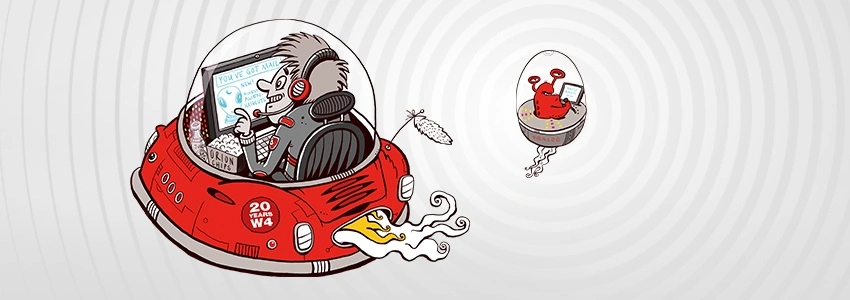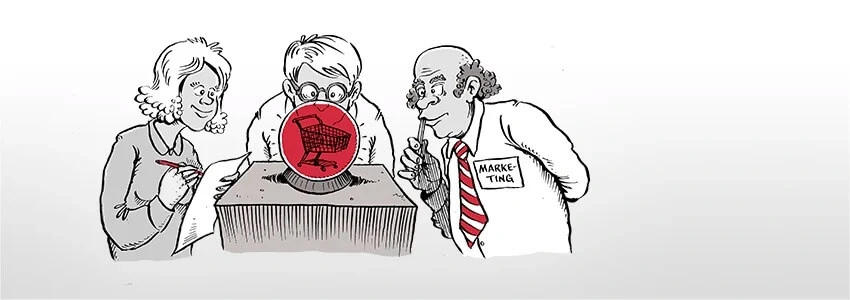Sure, people compare prices and weigh the pros and cons. But when it comes down to it, emotions often have the final say. We don't just buy with our heads—we buy with our hearts. And those emotional triggers don’t come from bullet points on a product sheet. They come from experiences. That’s where immersive marketing shines.
Why We Feel Before We Buy
Immersive marketing invites people into an experience to discover a new product or service. It dissolves the boundary between brand and person, turning what might have been a sales pitch into a moment of engagement that feels real and personal. Whether through panoramic 360° video, the full-body storytelling of virtual reality, or the contextual magic of augmented overlays, the format is just a means to a deeper end: presence. These tools let people stop being observers and become participants. They get to choose what to explore, how to move through the content, and what to pay attention to—making the experience uniquely theirs.
This freedom matters. Memory is shaped not just by what we see and hear, but by what we do and feel. The more senses involved, the stronger the impression. Touch, often overlooked in digital experiences, can be surprisingly powerful. Haptic technologies, interactive installations, and responsive environments let users “feel” a product—even when it isn’t physically there. These moments activate curiosity and turn fleeting attention into lasting impressions.
Immersion in Action: Video, VR, and AR

Beyond dazzling visuals or clever tech, it’s the ability to trigger real feeling that gives immersive marketing its edge.. A well-crafted experience doesn’t just entertain or impress. It sparks something. Curiosity. Delight. A sense of discovery. Even the quiet satisfaction of solving a challenge or unlocking a playful reward. And when the user is the one in control—navigating, selecting, interacting—that emotional connection runs deeper. Instead of being targeted, they feel seen, involved, and genuinely connected to the experience.
Immersive formats sit on a spectrum—from simple to complex, from passive to fully interactive. 360-degree videos, for example, are now affordable and easy to produce. Just one camera and a platform like YouTube can transport viewers into a scene where they decide where to look and what to focus on. A behind-the-scenes tour. A product reveal. A brand story unfolding in real space. It’s simple but surprisingly effective.
Virtual reality takes that experience further. With a headset, the user moves from observer to inhabitant. They’re not looking in—they’re in. Whether it’s test-driving a new car or walking through a building before it’s built, VR opens up possibilities that feel physical and immersive. While more complex to produce, the payoff is clear: people don’t just remember the product—they remember the feeling.
Then there’s augmented reality, which doesn’t ask people to leave the real world—it builds on top of it. AR adds digital information to the physical environment: product specs hovering in midair, interactive packaging, or real-time overlays that make the ordinary feel animated. The technology itself might fade into the background, but the impression it leaves is vivid and personal.
From Personalized Content to Personal Experience

It all comes down to meeting people where they are—with experiences that speak to what they care about. Immersive marketing marks a shift from broadcasting the same message to everyone to offering a different experience to each person. Traditional media speaks to the crowd. Digital personalization brought us dynamic email flows and behavior-based web content. Immersive tools take that logic and make it spatial. One person explores a 360° scene from the back corner; another focuses on the action in front. In VR or AR, two users might follow entirely different paths, guided by their own interests and behaviors. The experience responds to them, not the other way around.
What truly elevates it all is the story. Without a compelling narrative, even the most advanced technology feels hollow. A founder’s journey, a patient’s breakthrough, a community coming together—these are the stories that give immersive formats emotional weight. People don’t remember every detail of what they saw or touched, but they remember how it made them feel. And that feeling becomes the brand.
The most powerful immersive experiences don’t just invite people in—they make space for them to connect with others. Whether it’s through shared VR events, interactive AR campaigns, or user-generated content inside immersive spaces, the experience becomes something to talk about, share, and remember together.
Immersive marketing isn’t a feature to add—it’s a shift in how we connect. It replaces one-way messaging with something people can feel, explore, and remember. You’re not telling what your brand stands for. You’re letting people feel it. And that’s the kind of connection that lasts.
Immersive Marketing in Practice
Immersive marketing doesn’t have to live exclusively in virtual space or behind a headset. Some of the most compelling campaigns blur the lines between physical and digital—and it’s often those unexpected intersections that leave the strongest impression.
Back in 2016, Airbnb and the Art Institute of Chicago reimagined a famous Vincent van Gogh painting—not on canvas, but in real life. They built a life-sized version of the artist’s bedroom from Bedroom in Arles and listed it on Airbnb, where guests could actually book a night “inside a painting.” The installation wasn’t just for those lucky enough to sleep in it. It was designed for maximum shareability, giving the brand and the exhibition global reach through media buzz, photos, and word-of-mouth.
That’s the beauty of immersive marketing done right—it creates moments people want to talk about, whether they experienced them firsthand or not.
Digital platforms, of course, offer even more opportunities. Brands across industries are already using immersive experiences to deepen engagement and simplify decision-making. In the automotive space, VR lets prospective buyers explore and test-drive cars that haven’t even hit production. In tourism, virtual walkthroughs bring dream destinations to life, triggering wanderlust before a single booking is made. Furniture and home design brands now let users place products inside their own space virtually, removing guesswork and reducing purchase hesitation.
Augmented reality has opened up a different kind of access—blending the practical with the playful. Beauty brands let customers try on makeup in their own bathroom mirror. Fashion retailers use AR to offer virtual fittings or show how clothing moves and fits in real time. Even food packaging has become interactive, with scannable labels unlocking games, videos, and stories tied to the brand.
Meanwhile, physical environments aren’t being left behind—they’re just getting smarter. At trade shows and events, walk-in installations with interactive storytelling and gamified elements turn passive browsing into active exploration. Museums and retail spaces now layer in digital extensions that encourage discovery and deepen visitor connection long after they’ve gone home.
Famous brands that got it right:
IKEA – Place App (AR)

"Try before you buy" becomes a reality.
IKEA’s AR app allows customers to virtually place true-to-scale furniture in their own space. It removes the guesswork from home shopping and replaces it with confidence—and a clear path to purchase.
Nike – House of Innovation

Personalization becomes the product.
Inside Nike’s flagship stores, customers can customize and try on products in real time. Interactive screens, instant personalization, and in-store tech elevate shopping into a hands-on creative journey.
Audi – VR Showroom Experience

Test-drive a car—without the car.
Audi uses virtual reality in dealerships to simulate vehicle experiences. Prospective buyers can explore models, colors, and driving scenarios, all without stepping outside. It’s high-touch, low-pressure sales made immersive.
TOMS – Virtual Giving Trip
Purpose, not product, takes center stage.
TOMS invites customers to put on a VR headset and see how their purchase supports communities in need. This emotional storytelling connects values with action and transforms empathy into loyalty.
The Walking Dead – Our World (AR Game)
From screen time to street time.
This AR mobile game brings the world of the show into users’ everyday surroundings. Players fight zombies in real-life locations, blurring fiction and reality—and pulling fans deeper into the narrative.
Bring Your Brand to Life
As a B2B marketing agency, we help you turn this kind of innovation into action. Whether you’re launching a new product, energizing an event presence, or simply looking to stand out in a crowded market, immersive experiences can create the spark that conventional marketing often misses.
We build tailored strategies that combine technology with storytelling—using tools like VR, AR, interactive apps, and experiential design to move your audience from awareness to emotional connection. And more importantly, we help you shape experiences that people want to engage with—experiences that inform, inspire, and stay with them long after the moment ends.
Let’s talk about how we can use immersive marketing to help your brand connect more deeply, stand out more clearly, and grow more meaningfully.









